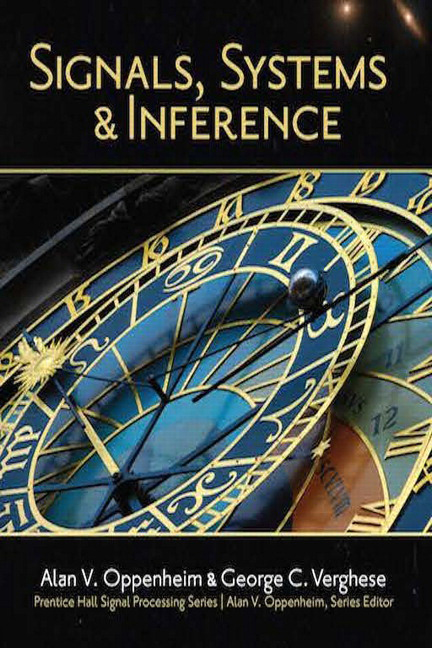New textbook based on 6.011 brings classic MIT undergraduate course to a wider audience.

Two EECS faculty members in charge of a longstanding MIT electrical engineering class have written a new textbook, Signals, Systems and Inference, based on their 20 years of experience teaching 6.011, an undergraduate course of the same name.
The course, taught by Alan Oppenheim, an MIT professor of electrical engineering and computer science, and George Verghese, the Henry Ellis Warren (1894) Professor of Electrical and Biomedical Engineering, is typically taken by third- and fourth-year students who are already familiar with introductory material covering signals, systems, and probability.
In a departure from traditional upper level electrical engineering courses, which typically focus on specialized subjects such as control, signal processing, or communication, Oppenheim and Verghese have structured the course to build broadly on introductory material. The result is a comprehensive course that gives students a rigorous foundation for more specialized study.
This unique approach also allows students to explore the ideas, methods, and tools used across the many fields involving signals, systems, and inference, including signal processing, control, communication, time-series analysis, financial engineering, biomedicine, and others.
Signals, Systems and Inference, published this spring by Pearson Education, Inc., has evolved from the course notes developed by the authors during their two decades teaching the course.
“The book shows the way to teach in a single course what is traditionally perceived as 3 or 4 distinct areas, while keeping the student excited about the beauty of the subject matter,” says José Moura, the Philip L. and Marsha Dowd University Professor of Electrical and Computer Engineering at Carnegie Mellon University. “Oppenheim and Verghese succeed because they stay highly focused on the fundamentals and then laser focused on the topics chosen. The book benchmarks future attempts to a similar synthesis of such diverse fields.”
News Image:
